Become the Squire of this Eclectic 19th Century Concrete Manse in Ossining
It’s been known by more than a few names over the years and has had an equal number of uses. But by any name or use it’s always been a bit unusual.

It’s been known by more than a few names over the years and has had an equal number of uses. But by any name or use it’s always been a bit unusual.
Located in the center of Ossining, the house now on the market at 36 South Highland Avenue has been known as Highland Cottage, Squire House, Grandview Sanitarium and the Squire School of Business, just to name a few.
It was built as a single-family home in 1872 when the town on the eastern shore of the Hudson River was still known by its original name, Sing Sing. Henry J. Baker, a wealthy businessman and active member of the community, had purchased Careswell, the Greek Revival mansion of General Aaron Ward in the late 1860s along with some surrounding land. On the lot across Highland Avenue from his estate, Baker built a new house.
In August 1872, the Democratic Register reported that work on the “Swiss cottage” by Henry J. Baker was progressing and, when completed, the concrete structure “will have a pretty and unique appearance.”
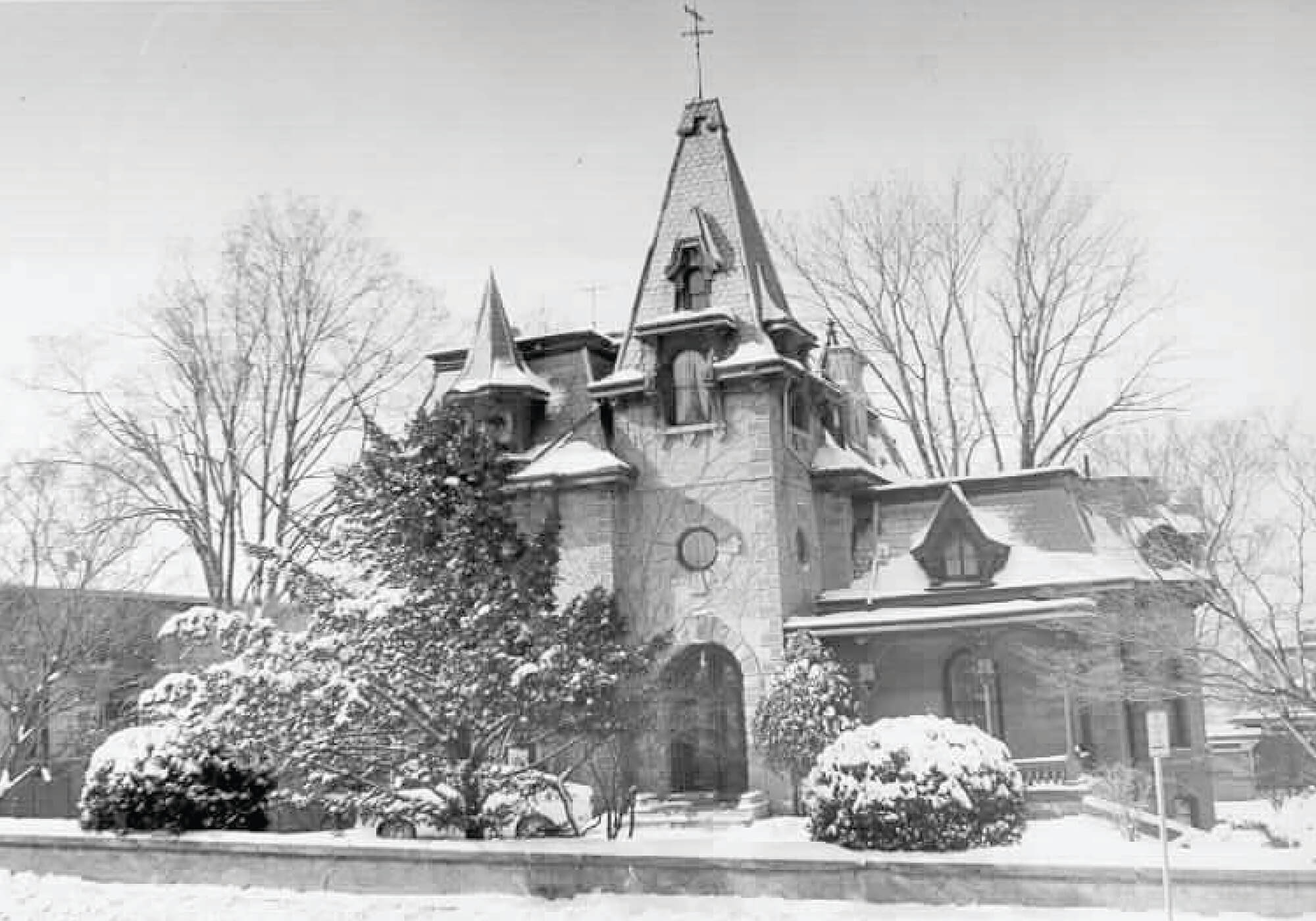
The construction of the house in concrete made it unusual for the time, although not completely unheard of. At the time it was listed on the National Register of Historic Places in 1982 it was believed to be one of only four extant 19th century concrete structures in Westchester County, and the oldest. It’s thought likely that the cement for the house came from nearby Rosendale, a center of 19th century cement production. The house was constructed around the same time a cast concrete arch was being built in Brooklyn — the Cleft Ridge Span in Prospect Park, which was begun in 1871 and completed in 1872.
The source for at least some of the tales might be the story “Mud House” told to Judith Sanborn by a resident of the house and printed in a 1940s issue of The Intelligencer, a publication of the Ossining Historical Society. The anecdote recounted was that a wealthy American visited England, “saw a house which he liked so much that he copied the plans” and then went the extra mile by bringing four workmen back with him. The truth of the tale is up for debate.
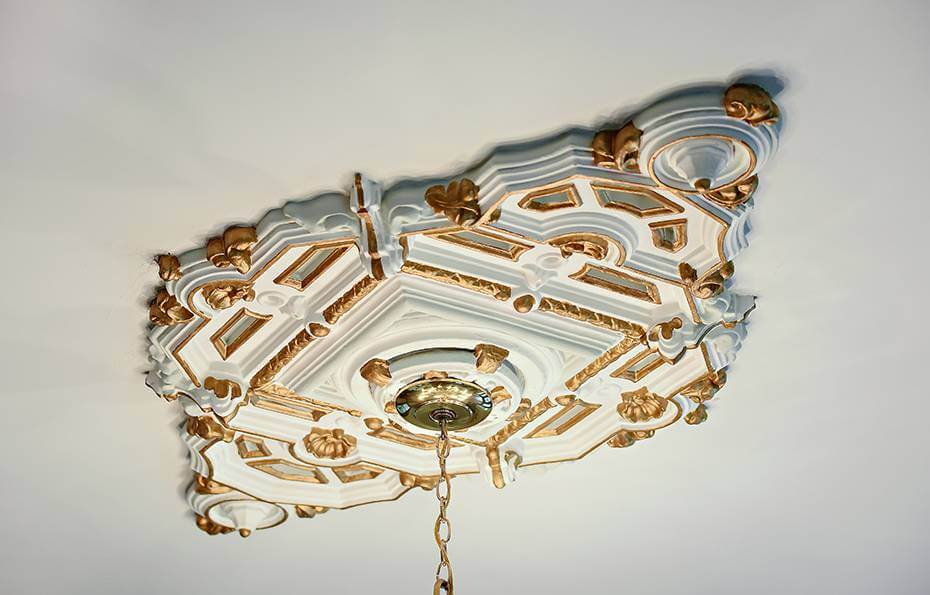
The architect was unknown at the time of the National Register nomination, but the design is now credited by historians to S. Marvin McCord. According to ads of the time in local papers, he was an architect and real estate broker in Sing Sing.
Baker built it not as a family home, but as an investment and leased it out. In 1876 the Democratic Register noted that the “beautiful Swiss cottage” had been leased “for a term of years” to a Mr. Kingsley who was moving to the town.
After Baker’s death in 1878, the house was purchased from his estate by Andrew and Jane Dickey. The Dickey family moved to Sing Sing from Albany with, in the words of the Albany Express in 1878, “Mr. D. devoting his whole time to the immense interests of Perry & Co., at the Sing Sing Prison.” The move was apparently necessitated with the Perry & Co. establishment of a foundry in the town, using prison labor for the manufacturing of stoves.
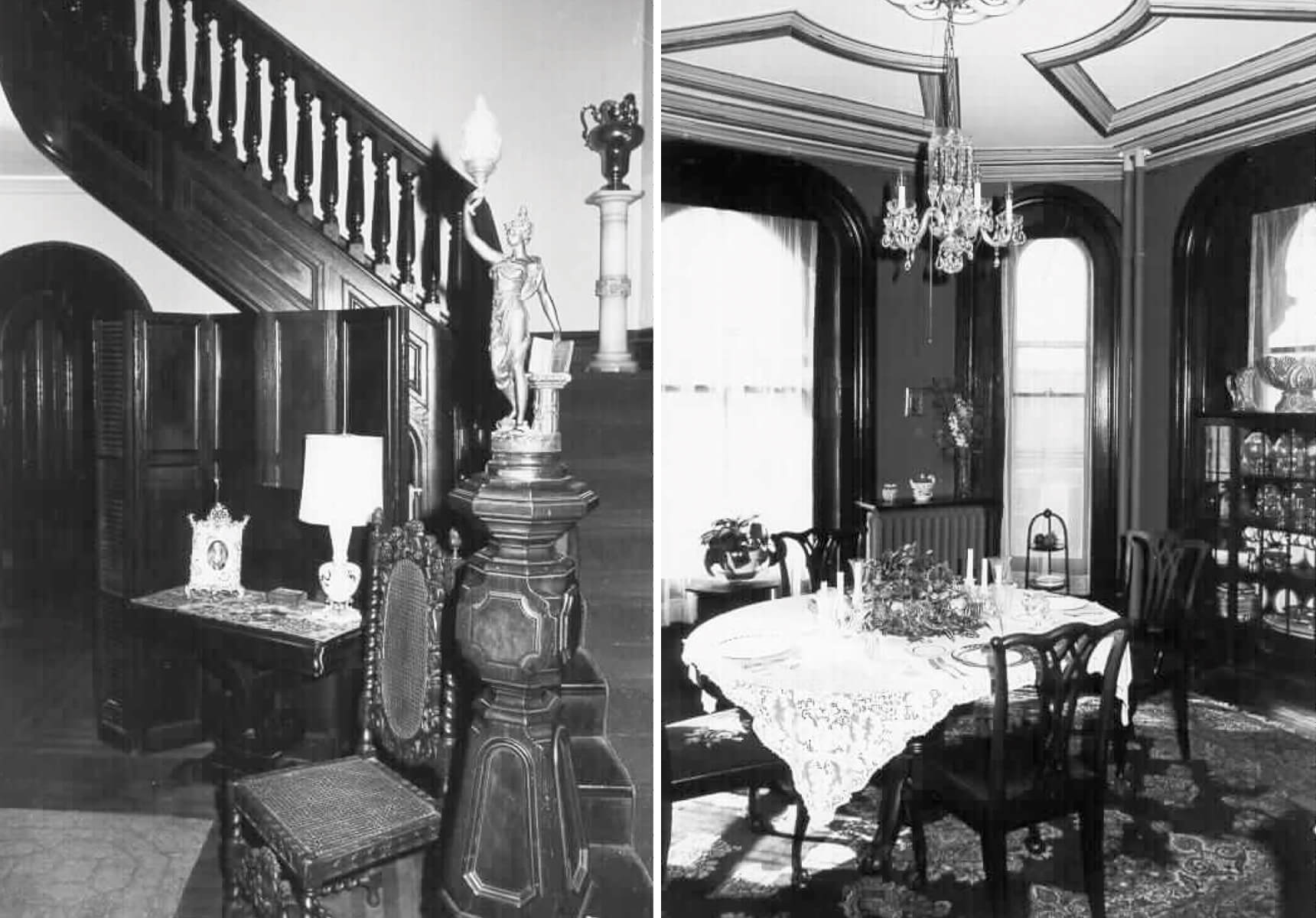
It was during the Dickey family’s time in the house that it became known as Highland Cottage, and a drawing of it appeared in print in a history of Westchester County published in 1886. According to the National Register nomination, the Dickey family didn’t own it for long — they were gone by 1887 and the house had a few more owners before being purchased by the family that would own it the longest and give it another name, the Squires.
Amos Osborne and Matilda Squire bought the house in 1905 and it would stay in family ownership until 1984. By the time of their purchase, the town had changed its name from Sing Sing to Ossining, in an attempt to separate a bit from the notorious prison.
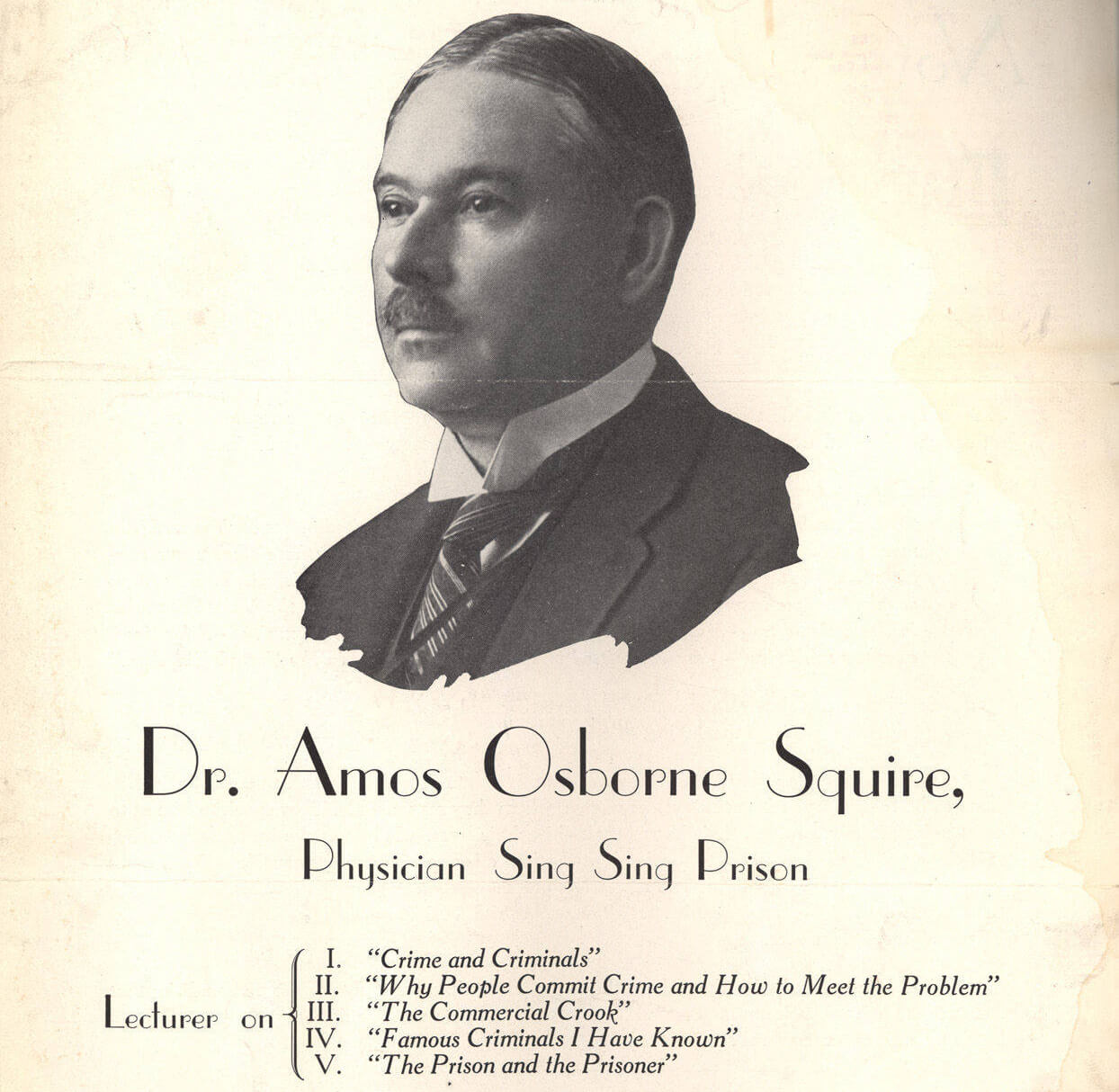
A doctor, Amos Osborne Squire served a number of positions in the community over the years, including as chief physician at Sing Sing Prison, the town health officer and the county medical examiner. In 1935, he published “Sing Sing Doctor” about his time working in the prison, where he described in fairly stark terms some of the 138 executions he oversaw during his time there.
Around 1912, Squire started using the house for a privately run mental health institution, the Grandview Sanitarium. The 1921 edition of the “American Medical Directory” recorded the sanitarium as having 18 beds. When Squire died in 1949, the house passed to his daughter Evelyn Squire Culp. She was also active in town affairs and used the house for her own enterprise, running the Squire School of Business there from the 1950s to 1980s.
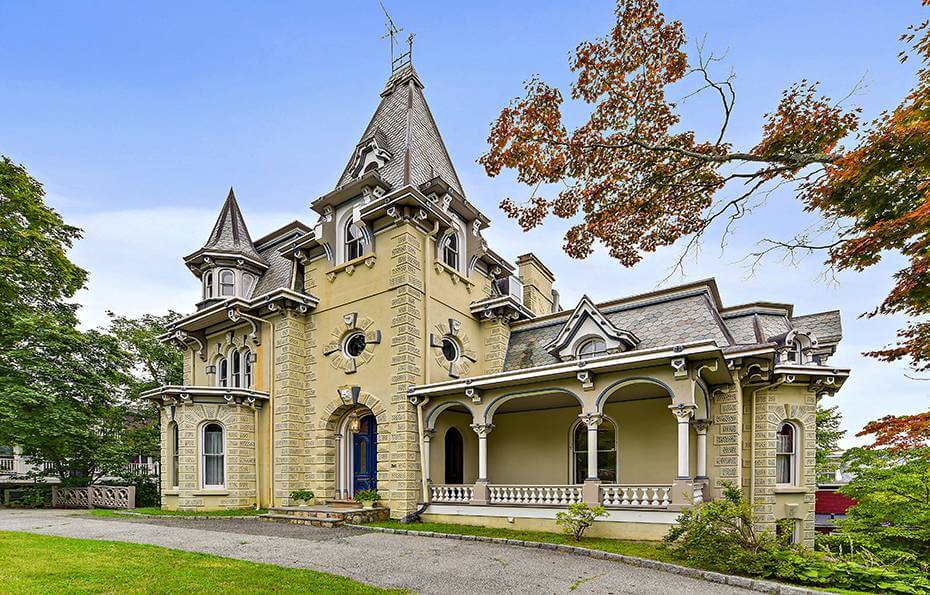
In 1984, Culp donated the house to the Westchester County Historical Society but retained life rights, living in the house until her death in 1996. Upon acquiring the house in 1984, the Westchester County Historical Society began to raise funds for research, maintenance, system upgrades and restoration work. In 1997, the society sold the house to the current owner who did further renovations.
While early press called the house a Swiss cottage, more contemporary accounts have settled on eclectic. It’s a fanciful, asymmetrical structure with a Victorian-era mix of elements — a Second Empire style mansard-roofed tower, dormers, bays, keystoned arches, quoining, bulls-eye windows and porches, just to name a few elements.
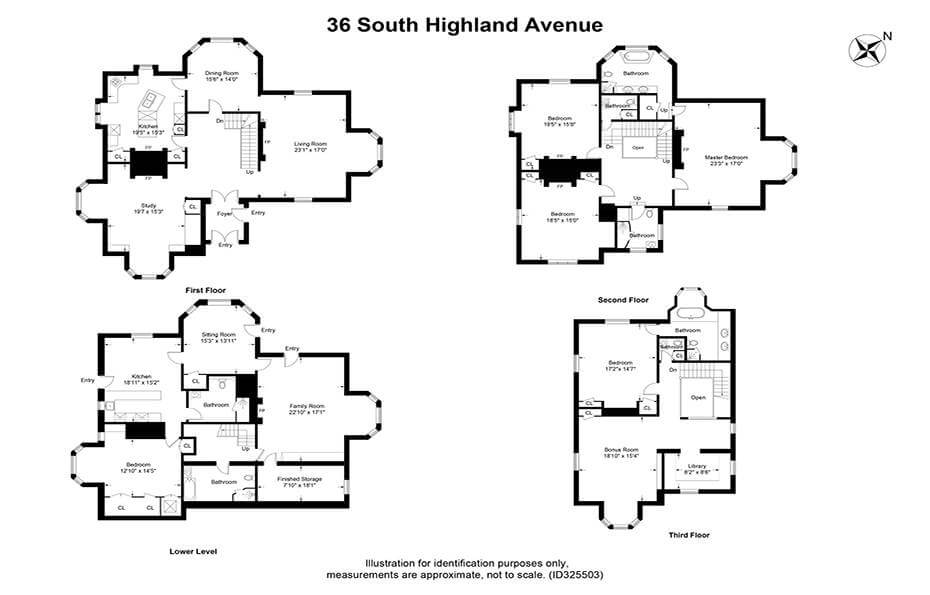
The expansive single family home was turned into a two-family, with the lower level of the house a one-bedroom apartment. This still leaves about 5,800 square feet of house on the upper floors — plenty of room to roam.
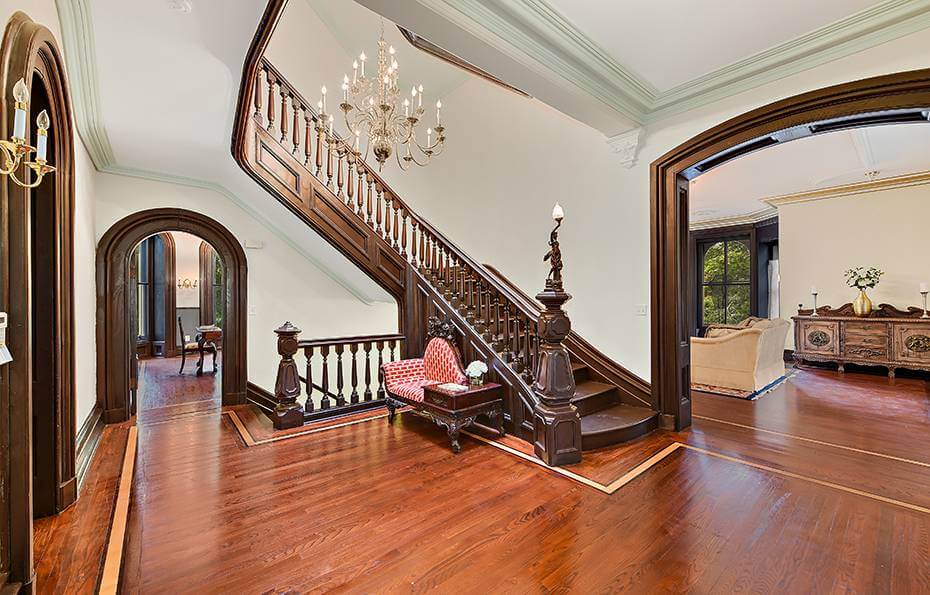
There’s lots of restored detail inside, with a grand central stair, moldings and hardwood floors.
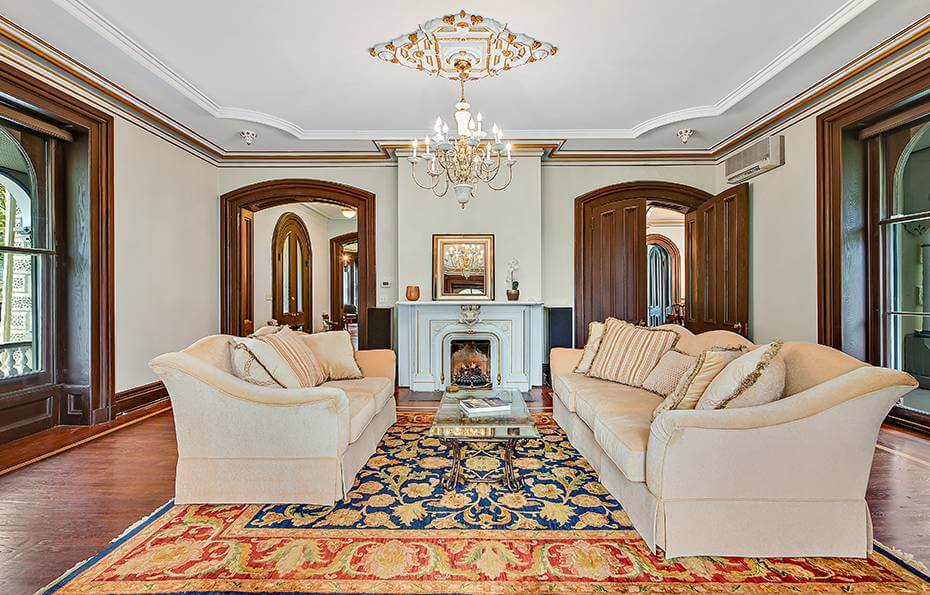
The first floor is dedicated to the entertainment spaces, with generously sized living and dining rooms, a study and the kitchen. There are original mantels scattered throughout the house, with six working gas fireplaces.
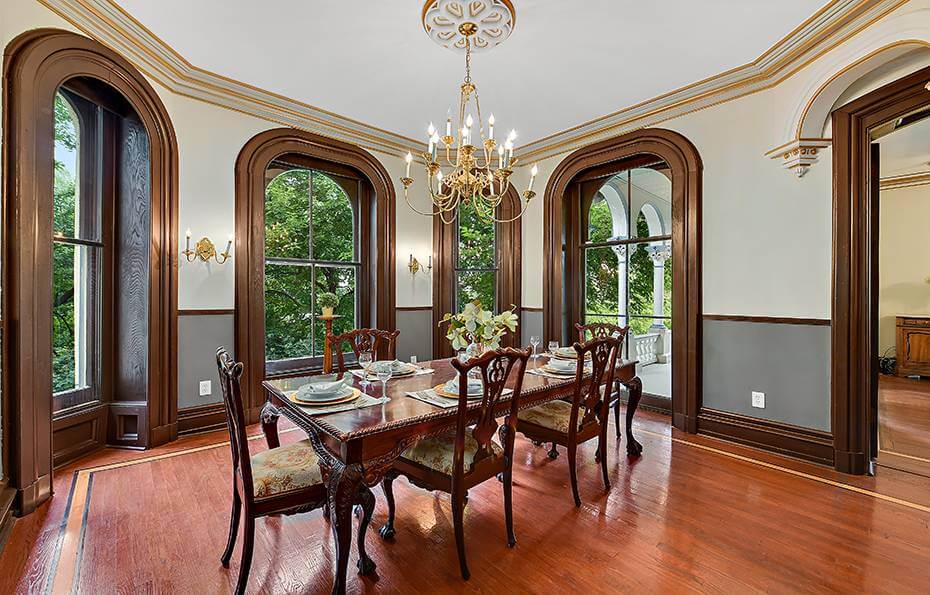
The dining room has a bay of large windows, with access to one of the porches.
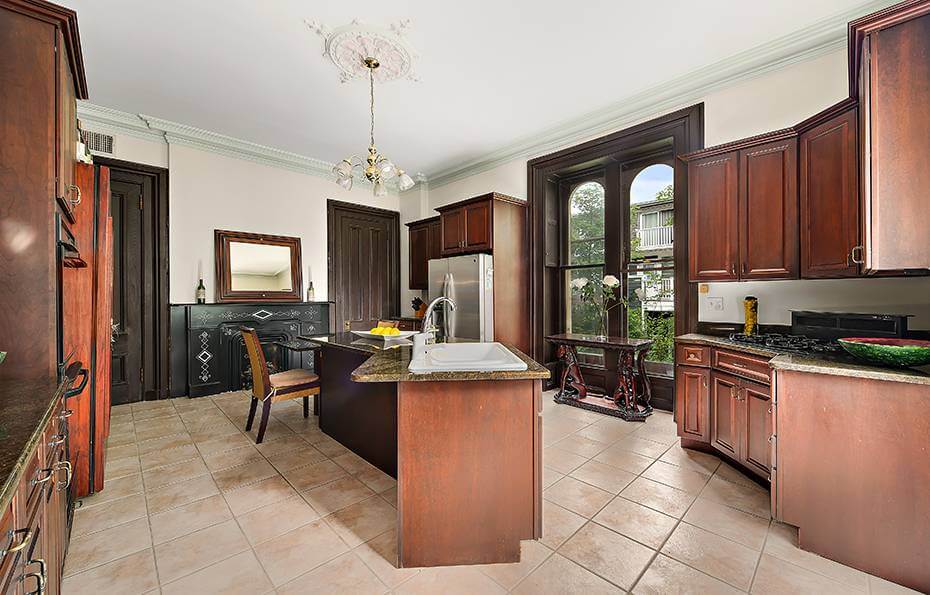
The design of the kitchen doesn’t lean into the original aesthetic of the house, but there are original moldings, a plaster medallion and a mantel in the space to lend period charm.
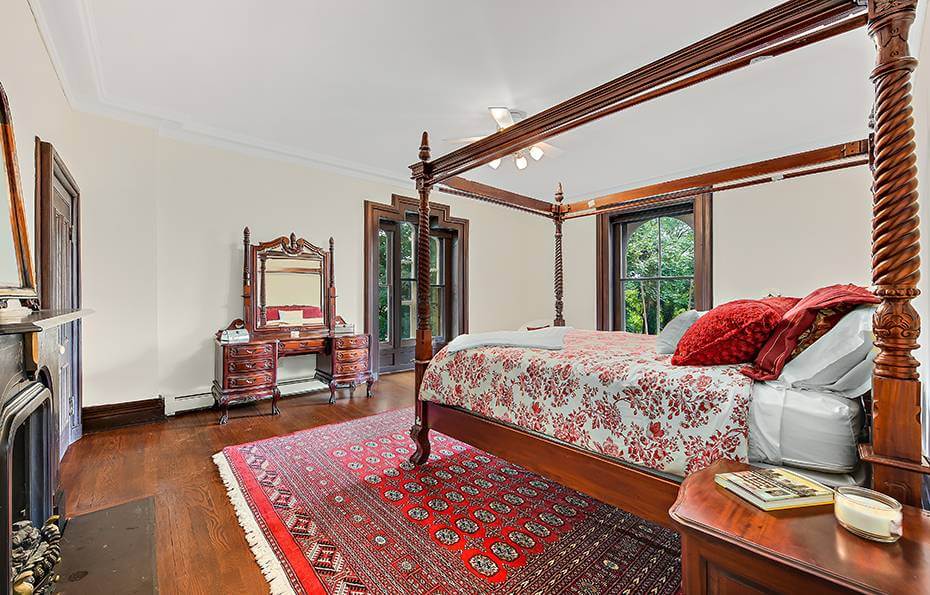
There are three bedrooms on the second floor, including a master with an en suite bath.
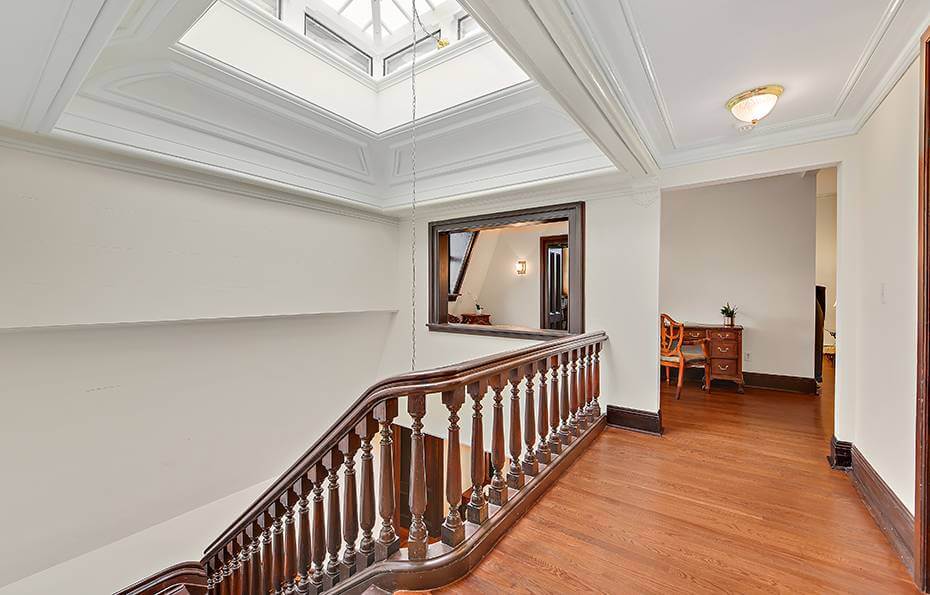
At the very top of the house is a fourth bedroom and an extra treat, a library.
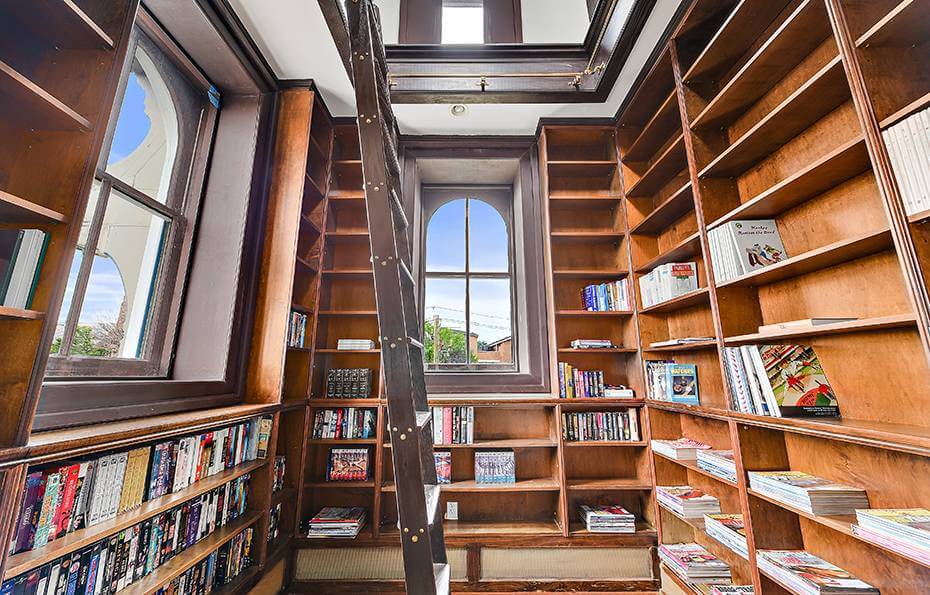
The library is tucked into the tower, a cozy spot for curling up with a novel or daydreaming while looking over the surrounding landscape.
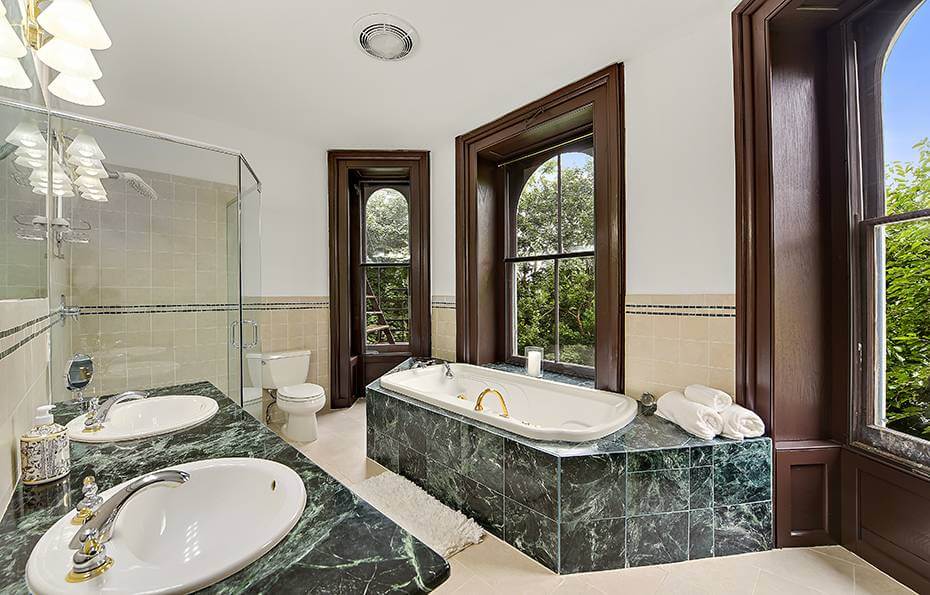
There are 3 full and 2 half baths in the house and those shown in the listing photos don’t give a hint that any clawfoot tubs or other period fixtures have survived.
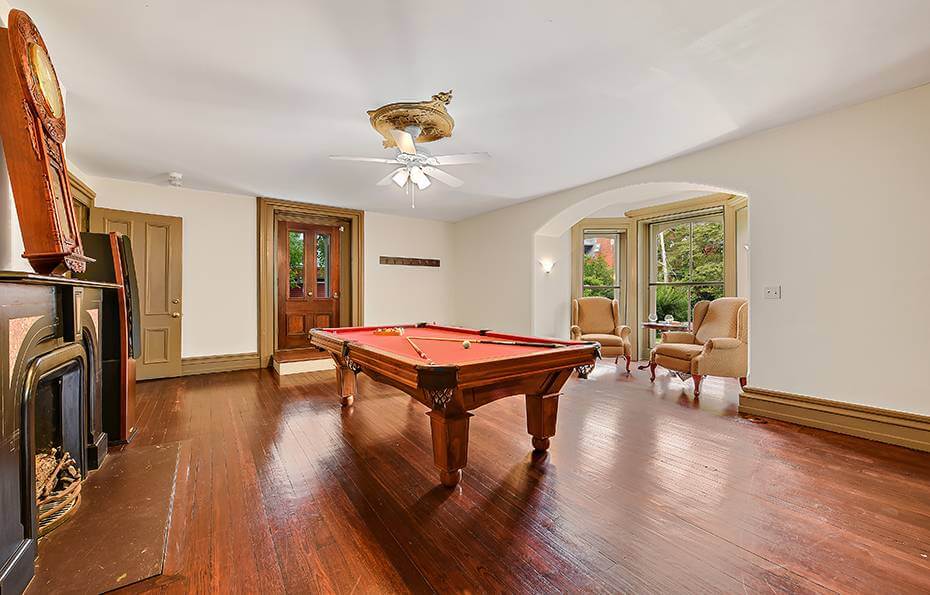
On the lower level, the one-bedroom apartment has about 2,000 square feet of space and a separate entrance. There’s a fireplace, although the listing doesn’t specify that this one is in working order.
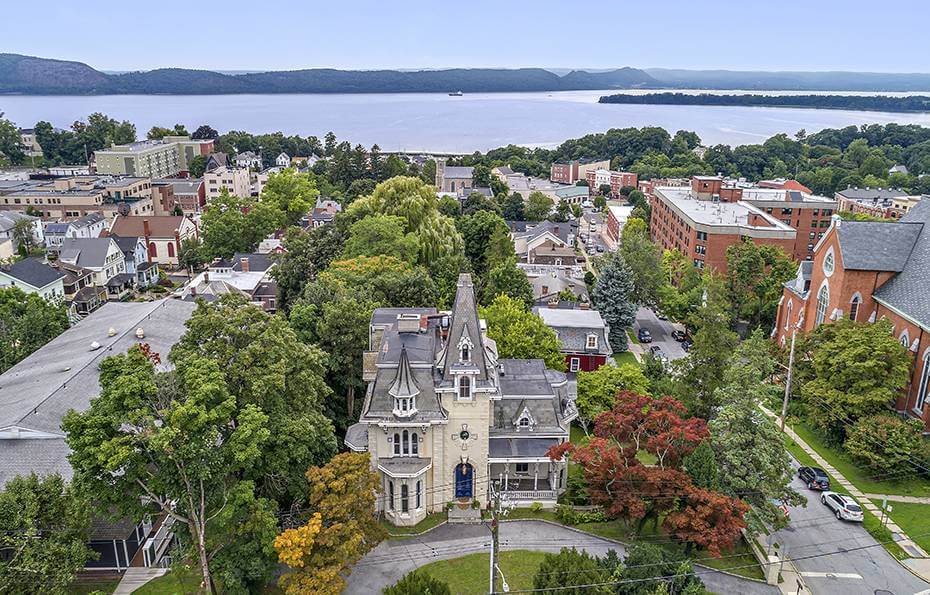
The house is located just about a 15-minute walk to the Ossining train station, where you can snag a Metro North train into the city. It’s also close to the center of Ossining’s downtown with local shops and restaurants and some 19th century architecture. For the walker, there’s the Old Croton Aqueduct Trail, a great spot for a fall walk to view the changing colors and get a gander at some of the other great houses in town.
The historic Squire House is listed for $965,000 by Jean Cameron-Smith and Heather Bouza with William Raveis.
Related Stories
- Get the Cucumber Sandwiches Ready, the Astor Teahouse Could Be Yours for $7 Million
- The Animals Have Left the Building and a Big Game Hunter’s Showplace Is on the Market
- Live the American Girl Dream in the Grand Second Empire Home of Doll Samantha Parkington
Email tips@brownstoner.com with further comments, questions or tips. Follow Brownstoner on Twitter and Instagram, and like us on Facebook.





What's Your Take? Leave a Comment